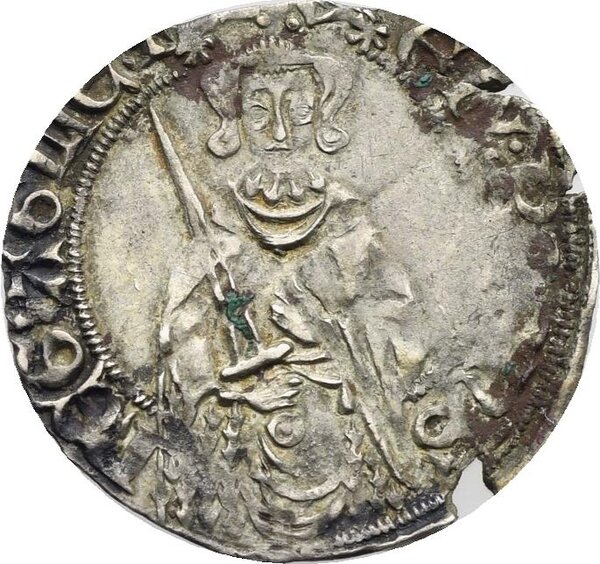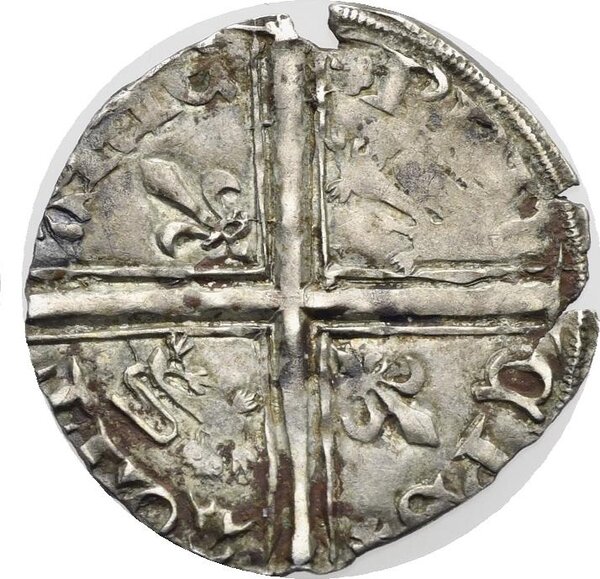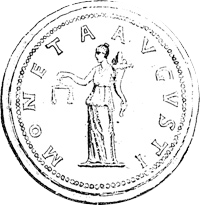





France. Aquitaine. Duchy of Aquitaine. Edward the Black Prince, 1362-1372. Hardi. (Silver, 19.51 mm, 0.97 g). Tarbes mint, small T at the end of the legend. Half-length figure of prince facing with sword and left hand pointing, canopy above, beaded circle and legend surrounding. Rev. Long cross pattée to outer beaded circle, lis in first and third angles, leopard in second and fourth, two rosette stops. Elias 207a. AGC 232 A.8a. S.8134. Toned, a few rim nicks and some die clash evident, good Very Fine.
Ex Baldwin's Fixed Price List, Summer 2016, lot GAL010.
Hardi was created relatively late, according to Elias, around 1368. The hardi “d'argent “was created at the same time as the hardi “d'or” and must have been struck at the same time as the second issue of the “demi-gros” and the “esterlin” d'Aquitaine.
Edward the Black Prince (1330-1376) was the eldest son of Edward III Plantagenet and Philippa of Hainaut. He took up arms for the first time at the Battle of Crecy in 1346, where he was greatly impressed by the chivalrous attitude of John the Blind, King of Bohemia, who preferred to die rather than suffer the shame of defeat. His heraldic arms will be ostrich feathers, which the King of Bohemia already wore. Edward the Black Prince was in Aquitaine in 1355 and began a campaign in Poitou the following year. He crushed the French at Poitiers and took King John the Good prisoner. The Treaty of Bretigny in May 1360 confirmed the independence of Aquitaine. Edward became its first prince in 1362. He arrived in Bordeaux in 1363. War with France resumed in 1369. After the first English defeats in Aquitaine, the Black Prince returned to England in 1371 and the following year renounced his principality. He died in 1376. His father Edward III died the following year. Richard II, son of the Black Prince, ascended the throne.


